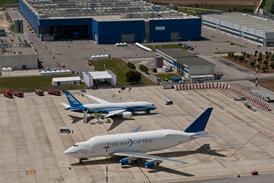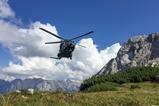An initial review of 10 critical areas that could hamper the development of Elysian Aircraft’s all-electric E9X clean-sheet airliner has not thrown up any “show-stoppers”, says the Dutch start-up’s chief executive.
Elysian broke cover earlier this year, detailing its plans for a battery-powered airliner capable of carrying up to 90 passengers on routes of up to 430nm (800km). A turbogenerator in the rear fuselage will provide a 45min reserve.

As part of the research supporting its argument that such a design would be feasible, Elysian identified 10 topics – what it called “hot potatoes” – requiring additional research.
These included battery charging times, thermal management, the high-voltage electric architecture, propeller-wing integration, and the design and certification of the reserve energy system.
But Daniel Rosen Jacobson, the developer’s co-chief executive, says a mid-year review of studies into those topics has given Elysian confidence in its design.
“Our conclusion is that there are no show-stoppers; we have a green light on all those difficult elements,” he says.
“The results are really, really promising. We know now a little bit more about how much things will weigh and how they will work. I believe we are on track towards feasibility.”
While several of the studies have concluded, at least one will run into 2025 as Elysian builds towards a second conceptual design review in the first quarter of next year.
Although he concedes there are likely to be changes over the current design iteration, “it doesn’t look like they will be major”.
Elysian is planning the first flight of an EX9 prototype in 2030 and service entry around three years later.
Jacobson sees that timeline as achievable and will next year begin working on key aspects of the programme, including firming up the supply chain and identifying a production site.
In the meantime, Elysian will shortly begin a Series A funding round as it looks to secure finance for the development work. Jacobson says it has sufficient funds to take the EX9 to the preliminary design review phase next year.
An initial meeting of its advisory board has also been held which offered “extremely positive feedback”, he says.
“We are very focused towards our second conceptual design review, growing our investor base and supplier and facility selection.
“We believe this is a key technology that is going to provide a commercial solution… and that it’s the most cost-effective, economically interesting, low-emission option for airlines at shorter ranges.”































